Armeria is a perennial herbaceous plant from the plumaceae family. In nature, wild species of this flower grow on rocky coasts and in the mountains of the Northern Hemisphere. The low-maintenance, frost- and drought-resistant perennial has been planted in gardens and flower beds for a long time. Its bushes with bright, dense greenery and abundant flowering will decorate any corner of the garden. Most often, armeria is planted in rock gardens and rockeries.
| Content:
|
Description of the plant
Many narrow linear leaves are collected in basal rosettes, forming a bush-curtain. Depending on the variety, the height of the bush can be 15-25 cm, and during flowering about 60 cm. The dark green leaves retain an attractive appearance from early spring to late autumn.
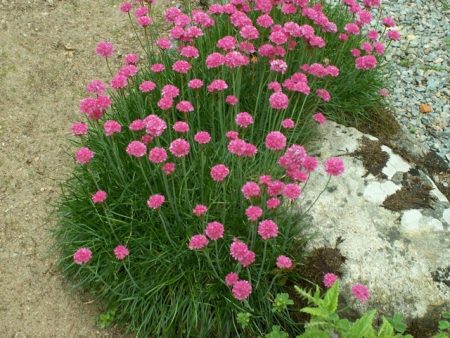
This is what army looks like.
Armeria blooms abundantly and long-lasting. Capitate inflorescences, collected from small flowers, rise on leafless straight peduncles. The size of the inflorescences is 2-3 cm, in some varieties up to 5 cm. The colors of the flowers are very diverse - white, all kinds of pink shades, lilac, dark red.
Growing Armeria from seeds
Planting Armeria with seeds is carried out when you need to get a lot of young plants or grow new varieties in your garden.
Planting armeria in open ground
- Sowing seeds in open ground is carried out in late autumn or early spring.
- Armeria prefers sandy and rocky soils.
- The plant does not tolerate stagnant water, so good drainage is necessary in the place intended for planting armeria.
- The soil should have a slightly acidic reaction. If necessary, acidity will help to increase the application of peat and organic fertilizers. Fertilizers such as ammonium nitrate or urea also increase the acidity of the soil.
- The seeds have good germination. It is enough to distribute them over the surface of the soil, pat them down a little and sprinkle them with a 2-5 mm layer of soil.
Armeria seeds.
In the future, the flower will reproduce well by self-sowing.
When planting Armeria seeds in open ground, flowering will occur only the next year.
Growing seedlings.
Seeds are sown in late February or early March. To obtain uniform shoots, the seed material must be stratified. For this purpose, the seeds are laid out on moistened cotton pads, gauze or multi-layer fabric napkins and placed in a plastic container or bag. The seeds in this form are placed in the refrigerator on the bottom shelf. Stratification lasts a week.
- For seedlings, slightly acidic peat soil is used with the addition of sand or vermiculite up to a third of the volume.
- Pour soil into plastic containers in a layer of 5-6 cm and moisten well.
- The seeds are laid out on the surface, sprinkled with sand or vermiculite with a layer of 3-5 mm and covered with film.
- Shoots appear 2-3 weeks after planting.
- When sprouts appear, the film is removed.
- To prevent seedlings from stretching, you need to provide good lighting and a temperature of 15-20 degrees.
Seedlings should be grown in good light.
Plant seedlings in the phase of two true leaves into separate pots. Further care of seedlings includes moderate watering and additional lighting.
Planting seedlings in the ground
Young plants are planted in open ground in May, when warm weather sets in without returning frosts.
When planting, maintain a distance of 30-40 cm between plants. If you need to get a carpet of soil, seedlings are planted after 15-20 cm.
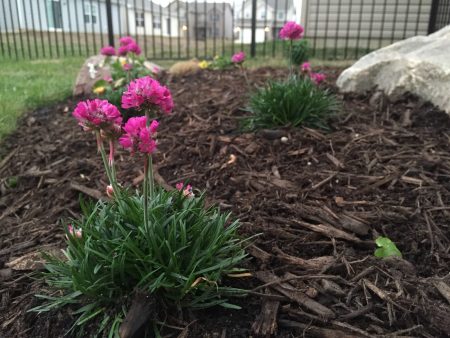
Plant flowers in a sunny place.
Choose a sunny place for planting armeria, where moisture does not stagnate after watering and rain. Good drainage is a must.With excessive moisture and stagnation of water, the roots begin to rot, which leads to the death of the plant.
The perennial prefers sandy loam, sandy, rocky soils with a slightly acidic reaction. If necessary, adding high-moor peat, organic and nitrogen fertilizers will help acidify the soil. The flower grows poorly on alkaline soils, so there is no need to add ash, dolomite flour and other components that deoxidize the soil when planting.
Reproduction of Armeria
Cuttings
In this way, armyia can be propagated throughout the summer. During the growing season, the bush grows young basal rosettes that can be cut off and rooted. Cut cuttings are planted immediately in moist, loose soil. For better rooting, seedlings can be covered using glass jars or cut plastic bottles. Usually cuttings take root fairly quickly.
Dividing the bush
A plant aged three to four years is dug up in spring or autumn after flowering has completed and carefully divided into small bushes. It is important that each division has good roots and several leaves. The bushes are planted in holes without deepening the root collar and watered.
Caring for Armeria in the open ground
Armeria is an unpretentious and easy-to-care perennial. A sunny place and light, slightly acidic soil in which moisture does not stagnate are necessary conditions for planting and successfully growing this crop.
How to water
Watering should be moderate, as the flower does not tolerate waterlogging. The plant is drought-resistant, so it can easily tolerate a lack of moisture. But with excessive watering, the root system will begin to rot, which will lead to the death of the plant.
But if the summer turns out to be dry and hot, you need to water it more often as the soil dries out, of course.
How to feed
Fertilizing with complete mineral fertilizer is carried out before and during flowering. Two or three times during the summer are enough.
Trimming
Regular pruning of stems with fading flowers will prolong flowering time. Without wasting energy on seed ripening, the plant will form more new buds.
Rejuvenation
Rejuvenation of bushes is carried out every three to four years by simply dividing the bush. The plant is dug up and divided into several bushes. If the flower is not renewed, by the age of five the bushes grow out, bloom less and lose their decorative effect.
Diseases and pests
Armeria is resistant to various diseases. If agricultural conditions are violated (alkaline soil reaction, excess moisture), spots may appear on the leaves of a weakened plant.
The problem is being solved trimming damaged parts. It is necessary to spray with solutions of fungicides: Fitosporin, Gamair, copper-containing preparations.
From pests Most often, flowers are attacked by aphids. The following drugs will help in the fight against this pest: Aktara, Intavir, Akarin, Actofit.
Armeria varieties
Armeria seaside
Armeria maritima grows naturally on the rocky coasts of the Northern Hemisphere. Narrow linear leaves of dark green color are collected in basal rosettes, forming clump-shaped bushes. The species is drought-resistant and can overwinter without shelter.
- Bush height – 15-20cm
- Peduncle height – 20-30cm
- Diameter of inflorescences 3-4cm
- Flowering begins in May and lasts up to 70 days
Varieties:
- Louisiana Army with bright pink inflorescences
- Alba with snow-white flowers
- Splendence Perfecta with crimson flowers
- Vindictive with red inflorescences
Armeria is beautiful
Armeria beautiful or pseudoarmeria differs from other species in having wider leaves, which are collected in basal rosettes. For the winter, it is advisable to cover the plants with spruce branches or non-woven material.
- Bush height – 20cm
- Peduncle height 35-40cm
- Diameter of inflorescences 4-5cm
- Flowering time – June-August
Varieties:
- Ballerina Red with red inflorescences
- Ballerina Wyet with white flowers
- Ballerina Lilac with dark pink flowers
- Joystick Lilac with lilac-pink flowers
Armeria alpine
Armeria alpine is native to the alpine mountain regions of Europe. The leaves are narrow, bright green, collected in basal rosettes, forming dense cushion-shaped clumps.
- Bush height – 8-15cm
- Peduncle height 30cm
- Diameter of inflorescences 3cm
- Flowering time – June-July
Varieties:
- Rosea with pink flowers
- Laucheana with bright red flowers
Armeria soddy
Armeria soddy or juniper-leaved is distinguished by abundant, friendly flowering. The needle-shaped, hard leaves form dense curtains. Inflorescences on short stems cover the bushes with a continuous carpet, through which the green foliage is barely visible. This species requires mandatory shelter for the winter.
- Bush height 5-8cm
- Peduncle height 5-6cm
- Diameter of inflorescences 3-4cm
- Flowering time from July for 40-50 days
Varieties:
- Brno with lilac-pink flowers
- Alba with white flowers
- Bevans Variety with soft pink inflorescences
Armeria Velvich
Armeria Velvich has wide up to 5 cm and long leaves. The plant is distinguished by tall shoots and long, abundant flowering until autumn. A special feature of this variety is its requirement for calcium content in the soil.
- Bush height 25-30cm
- Peduncle height 35-40 cm
- Diameter of inflorescences 2cm
- Flowering time from June to autumn
- Inflorescence color – pink
Armeria in garden design
In nature, wild species of this flower grow among rocks in mountainous areas, on the poor rocky soil of the coast. Therefore, armeria is traditionally planted in rock gardens and rockeries. Dark green cushion-shaped curtains look great among the stones, creating contrasting spots. From early spring to late autumn, herbaceous bushes retain their decorative appearance. During flowering in summer, many spherical inflorescences add bright colors and charm.
Armeria is planted in flower beds and ridges. Dense herbaceous clumps grow quickly, covering the soil with a dense carpet, and are excellent for creating a green area or clearing.
An interesting combination is provided by planting armeria next to such ground cover plants as periwinkle, subulate phlox, creeping thyme, rock alyssum.
Low-growing varieties of these flowers are also used to decorate borders around flower beds and flower beds, along paths. Dense cushion-shaped bushes provide an excellent border for lawns and gravel areas.
Wintering of Armeria
Most species of this flower tolerate winter well without shelter under snow cover. The exception is the soddy armeria, which always needs good shelter.
If in your region there are winters with little snow and thaws often occur, then the plants must be covered with spruce branches or non-woven material, dry peat.
Continuation of the topic:
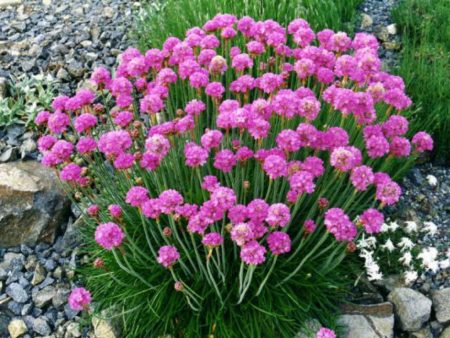
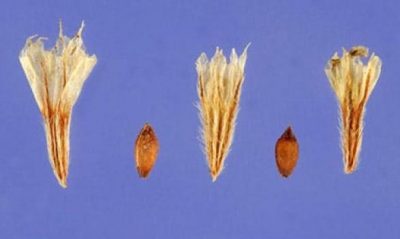
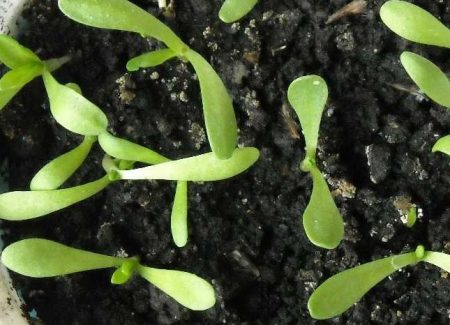

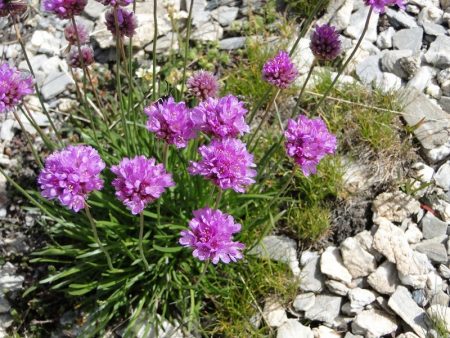
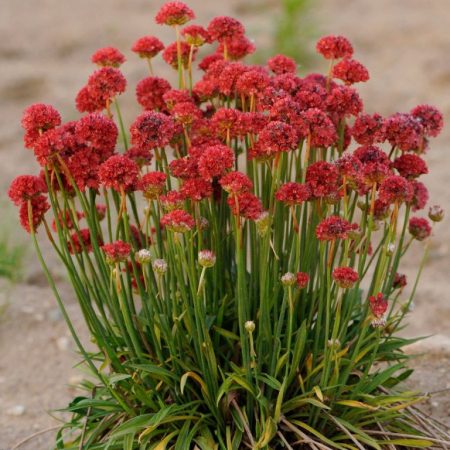
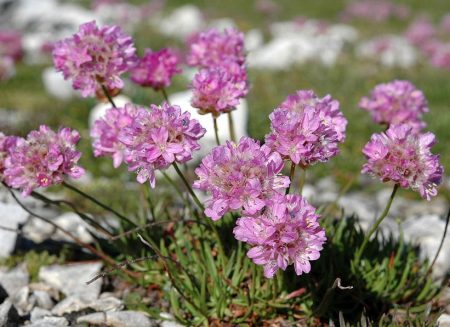
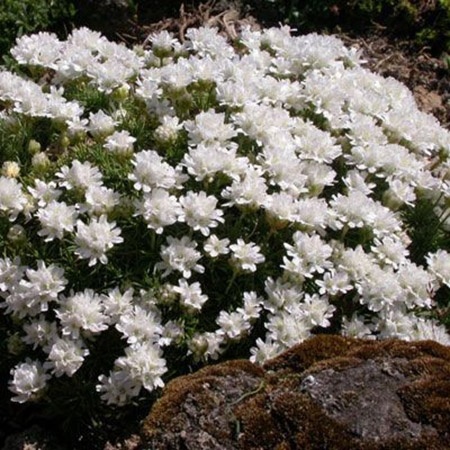
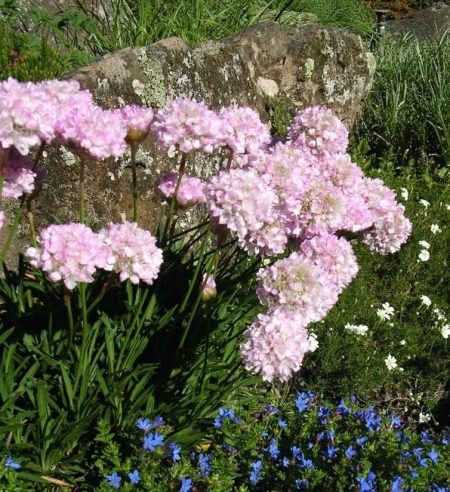
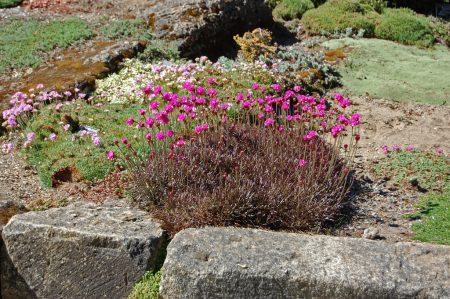
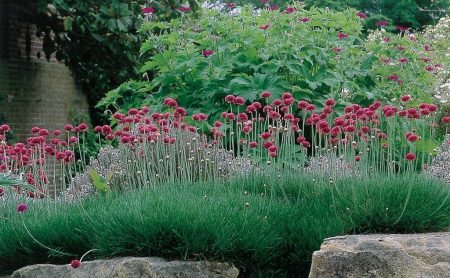

 CUCUMBERS NEVER GET SICK, I'VE BEEN USING ONLY THIS FOR 40 YEARS! I SHARE A SECRET WITH YOU, CUCUMBERS ARE LIKE THE PICTURE!
CUCUMBERS NEVER GET SICK, I'VE BEEN USING ONLY THIS FOR 40 YEARS! I SHARE A SECRET WITH YOU, CUCUMBERS ARE LIKE THE PICTURE! You can dig a bucket of potatoes from each bush. Do you think these are fairy tales? Watch the video
You can dig a bucket of potatoes from each bush. Do you think these are fairy tales? Watch the video
 How our fellow gardeners work in Korea. There is a lot to learn and just fun to watch.
How our fellow gardeners work in Korea. There is a lot to learn and just fun to watch. Eye trainer. The author claims that with daily viewing, vision is restored. They don't charge money for views.
Eye trainer. The author claims that with daily viewing, vision is restored. They don't charge money for views. A 3-ingredient cake recipe in 30 minutes is better than Napoleon. Simple and very tasty.
A 3-ingredient cake recipe in 30 minutes is better than Napoleon. Simple and very tasty. Therapeutic exercises for cervical osteochondrosis. A complete set of exercises.
Therapeutic exercises for cervical osteochondrosis. A complete set of exercises. Which indoor plants match your zodiac sign?
Which indoor plants match your zodiac sign? What about them? Excursion to German dachas.
What about them? Excursion to German dachas.